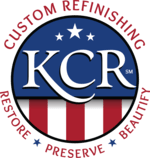Your job as a facility or property manager is to maintain your building’s exterior as well as ensure essential infrastructure runs efficiently – but not at the cost of the safety of your maintenance staff. Efflorescence or cracked brick or stonework may damage your facility’s aesthetic appeal, but injuries to you or your employees should be avoided at all costs.
Exterior building maintenance can be dangerous, especially when it comes to commercial office buildings that are several stories tall and include dozens of large windows, extensive architectural features, and brick and stone that need to be cleaned, maintained or repaired. The winter can add an additional layer of safety hazards to the mix. Cold weather can affect employees’ ability to work quickly and effectively, while ice and snow can compromise footing and create falling hazards. Fortunately, keeping your building looking pristine doesn’t have to come at the expense of your staff’s safety.
Slips and Falls
Slip-and-fall accidents are among the most dangerous and the most prominent in the maintenance world. Fall prevention often tops OSHA’s list of the top-10 most significant and common workplace violations.
The nature of exterior building maintenance lends itself to increased risk of slips and falls. It’s common for maintenance workers to work dozens of feet above the ground to clean exteriors, and unless proper equipment is used, training is provided and policies are strictly adhered to, this can put workers at risk of injury.
Chemical Hazards
There are a wide variety of chemical cleaning agents on the market, especially in the commercial sectors. You are likely familiar with a number of the more common options, but it’s important to ensure your working knowledge covers more than just the basics.
It is beneficial to know which agents you have at your disposal in addition to the active chemical ingredients in each one. More importantly, knowing if and how they may react with other chemicals or even building surfaces is critical. One example is rock salt, frequently used as a chemical ice melt during winter. It is highly corrosive and can damage concrete, brick, stone, carpet and any other surface it comes into contact with. Similarly, while you may be tempted to reach for an industrial solvent when you notice the appearance of efflorescence on your exterior surfaces, using harsh chemicals is counterproductive: Most efflorescence can be cleared away with simple water, and using solvents or other chemical agents can damage brick and stone.
Respiratory Hazards
Mold is a major health hazard due to the respiratory dangers it can pose. Water damage can often result when a building envelope isn’t properly sealed or if a window needs to be caulked, and where there’s water damage, mold isn’t often far behind. But while a bit of water damage may seem harmless enough, mold removal is a serious task that should only be undertaken by professionals who know exactly what they’re doing.
This is the type of situation in which you can benefit greatly from a partnership with a qualified building maintenance provider. Not only can the trained building professionals ensure your facility receives the exterior maintenance it needs to keep looking its best, but they can also do so without you having to shoulder the additional worry of maintaining the safety of your maintenance staff.

